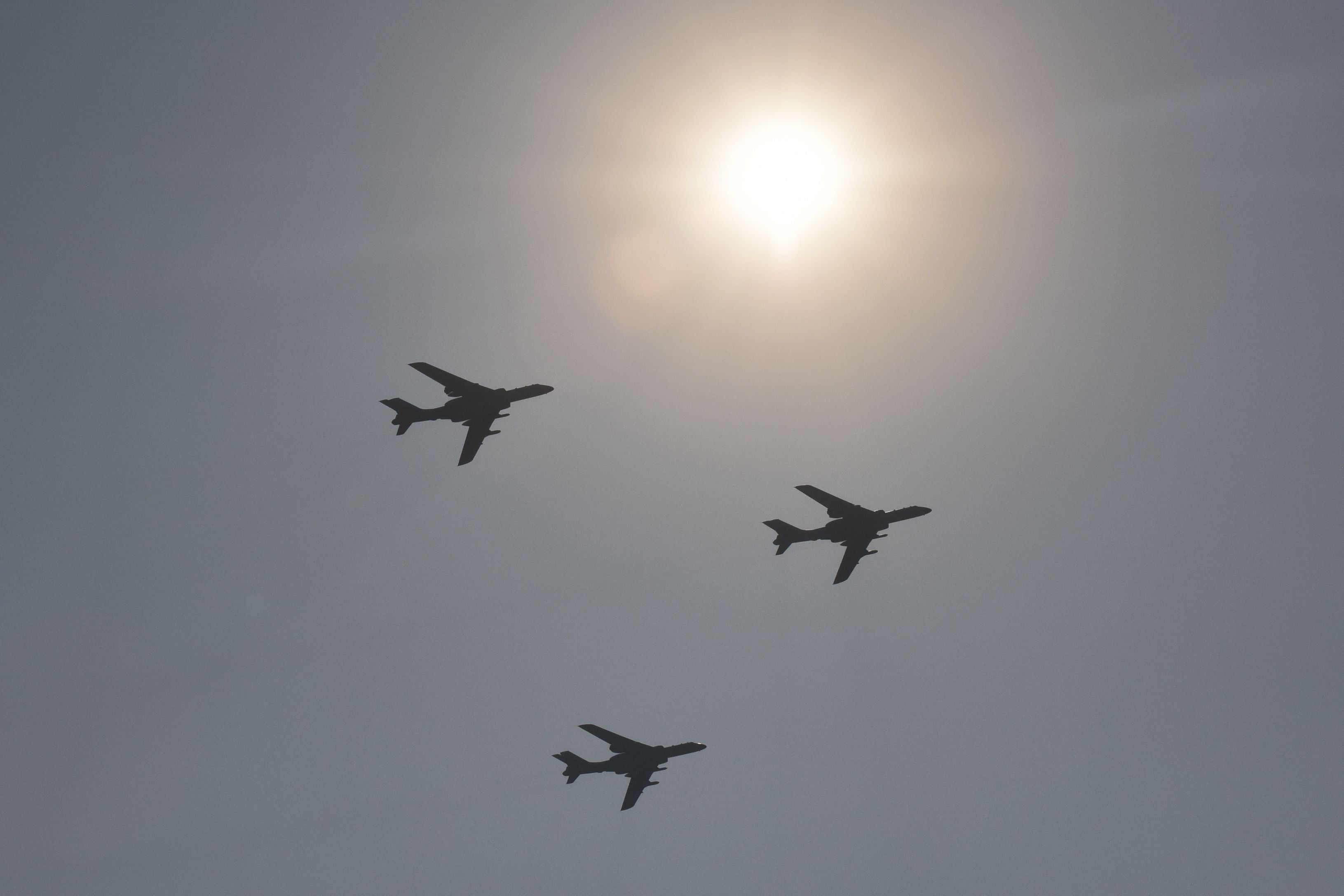China sends long-range bombers to mountainous border with India
Experts say footage aired on Chinese state TV is meant to send a warning to India

Your support helps us to tell the story
From reproductive rights to climate change to Big Tech, The Independent is on the ground when the story is developing. Whether it's investigating the financials of Elon Musk's pro-Trump PAC or producing our latest documentary, 'The A Word', which shines a light on the American women fighting for reproductive rights, we know how important it is to parse out the facts from the messaging.
At such a critical moment in US history, we need reporters on the ground. Your donation allows us to keep sending journalists to speak to both sides of the story.
The Independent is trusted by Americans across the entire political spectrum. And unlike many other quality news outlets, we choose not to lock Americans out of our reporting and analysis with paywalls. We believe quality journalism should be available to everyone, paid for by those who can afford it.
Your support makes all the difference.China’s military has deployed long-range bomber planes to its border with India, in a move described by analysts as a strong but measured warning to its neighbour.
State-run news channel China Central Television (CCTV) aired footage of H-6K bombers flying near the Himalayas last week, during the People’s Liberation Army (PLA) Air Force’s 72nd-anniversary celebration.
The South China Morning Post reported that while the bomber planes are typically based close to Beijing, they were moved last year to Xinjiang province, closer to a region that is contested by both India and China.
“It’s very easy for the PLA to fly H-6Ks to the China-India border because the aircraft are stationed ... under the Western Theatre Command,” an unnamed military source told SCMP.
The Western Theatre Command includes Xinjiang and Tibet military districts and is also responsible for security along the country’s border with neighbouring India.
Antony Wong Tong, a military analyst, told SCMP that deploying such bomber planes near the Indian border was “definitely a warning to India”.
Mr Tong said that “New Delhi is within the combat range of the H-6K and the striking range of the CJ-20 [long-range missiles].”
But Song Zhongping, another military commentator and a former PLA artillery instructor, said the PLA would not attack civilian areas.
“China will not attack civilian areas, so Delhi will not be targeted by air-launched missiles even though the capital is quite close to the border,” he said.
The H-6K jets are usually outfitted with the CJ-20 missiles for land and sea encounters. The planes deployed near the Indian border, however, were armed with short-range KD-63 missiles and not the CJ-20 missiles.
Zhou Chenming, a researcher from the Yuan Wang military science and technology institute in Beijing, said it was “notable” the CCTV footage did not include images of the CJ-20.
“It’s a careful warning from the PLA. The CCTV [report] deliberately did not include footage of the H-6K with powerful CJ-20,” Mr Zhou said.
“China hopes the border conflicts will not escalate further, with the coronavirus pandemic expected to worsen this winter,” he added.
Tensions between India and China have been brewing since October when talks between the military leadership of the two countries broke down.
In June last year, dozens of Indian soldiers were killed after a violent clash between the Chinese and Indian armies at the Galwan Valley in Ladakh took place. Reports called it the worst clash in 45 years and said this had led to a military standoff with China and multiple rounds of talks between the two countries.
The Indian Air Force, in response to the news of bomber planes deployment at the border, sent its Mig-29UPG and Su-30MKI fighter jets to their airbases in Ladakh, Sikkim and Arunachal Pradesh — three regions contested by both India and China.


Join our commenting forum
Join thought-provoking conversations, follow other Independent readers and see their replies
Comments